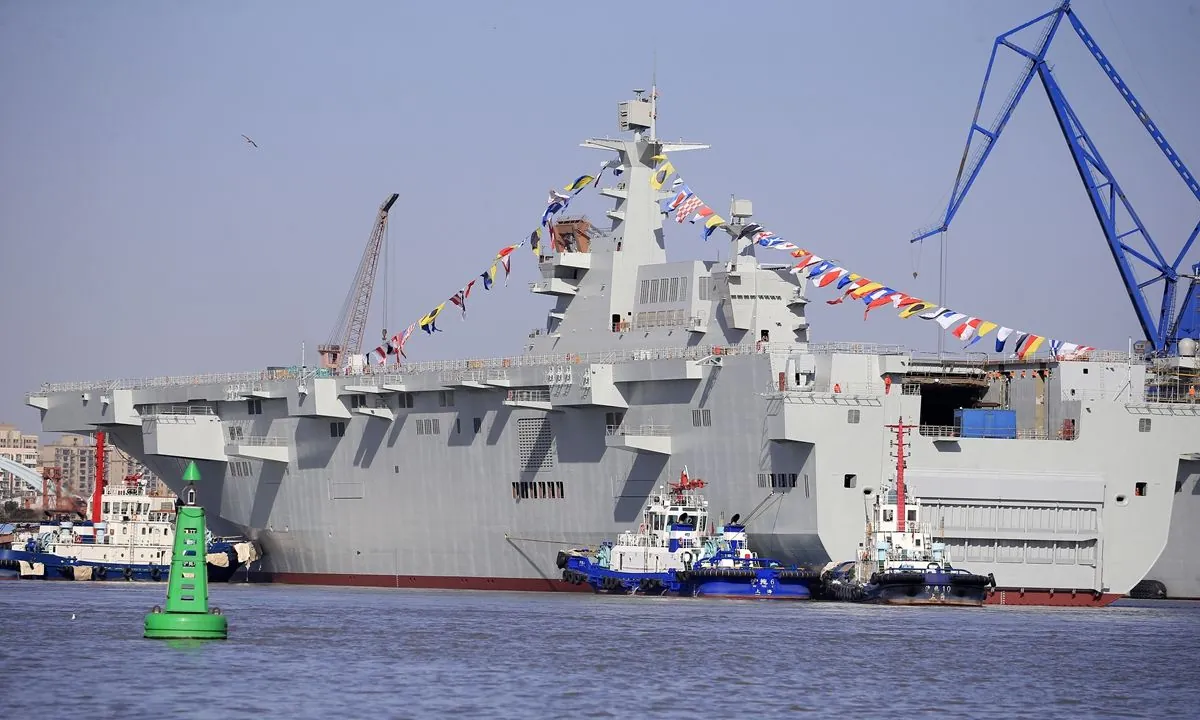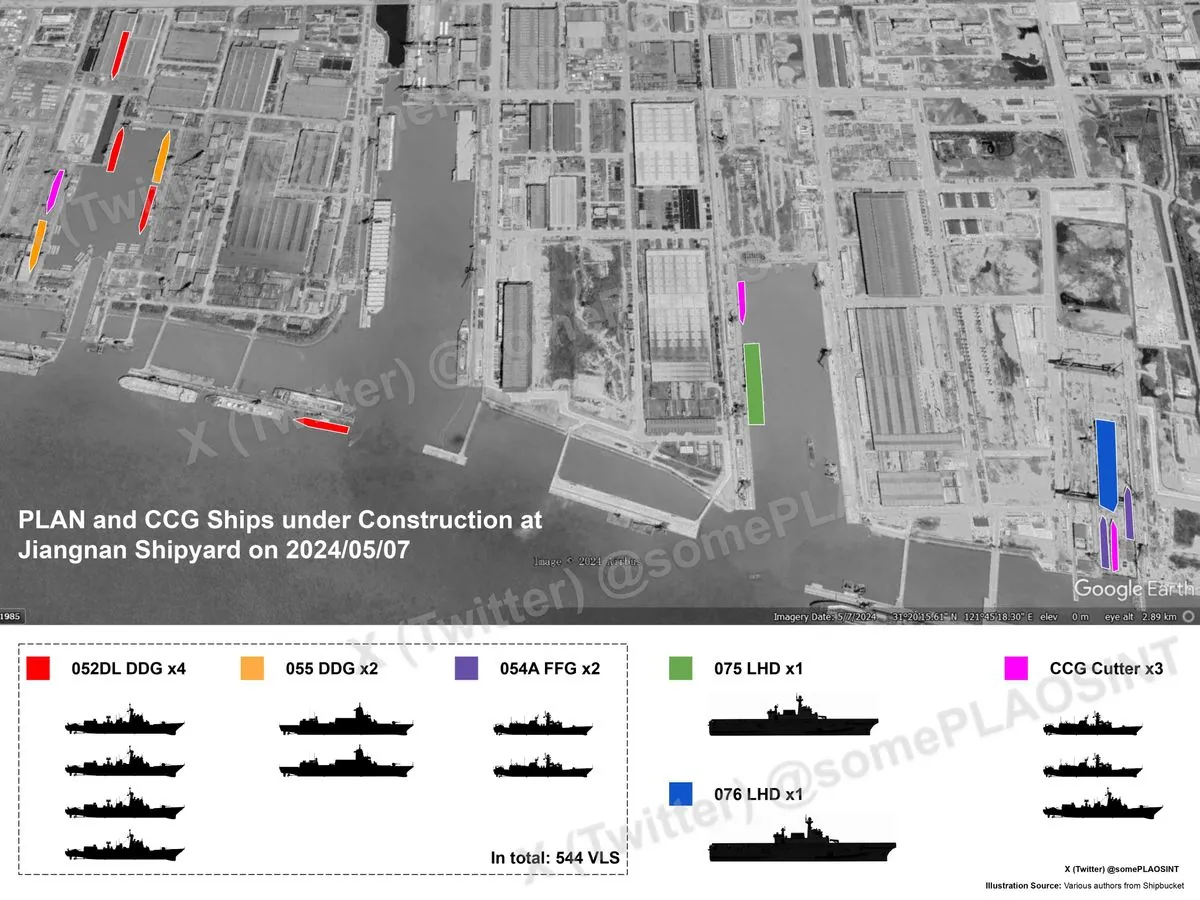China's Naval Expansion Outpaces US, Raising Concerns in Southeast Asia
China's rapid shipbuilding capabilities, including the construction of the world's largest amphibious assault ship, are outpacing the US. This naval expansion is raising concerns about potential conflicts in Southeast Asia, particularly regarding Taiwan.

China's naval expansion has reached unprecedented levels, with the construction of the world's largest amphibious assault ship progressing at an astonishing pace. The 076 Class vessel, also known as the "Yunan" class, is being built at the Changxing Island Shipbuilding Base near Shanghai. Experts predict its launch as early as 2025, showcasing China's remarkable shipbuilding capabilities.
This rapid development is part of a broader trend in China's naval growth. Since 2019, China has launched four 075 class vessels, with two already combat-ready and four more on order. The speed of production is alarming US counterparts, as China's naval force now surpasses the US in sheer numbers.
According to the London-based International Institute for Strategic Studies, China boasts 234 warships over 1,000 tons, compared to the US's 219. This shift in naval power dynamics is particularly significant given China's focus on its immediate neighborhood, especially in the context of potential conflicts in Southeast Asia.

The Changxing Island Shipbuilding Base, owned by the government-run China State Shipbuilding Corporation, has played a crucial role in this expansion. Since its construction in 2005, it has undergone multiple expansions, including the building of China's third aircraft carrier, the "Fujian," between 2015 and 2022.
China's dominance extends beyond military vessels. In the civilian sector, Chinese shipyards now account for over 50% of global merchant shipping tonnage, a significant increase from just 5% in 1999. This contrasts sharply with the US, which produces less than 5% of the global total of new merchant vessels annually.
US strategists are increasingly concerned about this disparity in shipbuilding capacity. One unclassified US naval intelligence estimate suggests that China's total shipbuilding capacity is now more than 632 times that of the US. This vast difference in production capabilities could have significant implications in the event of a conflict.
"The side with the most ships almost always wins."
To address this imbalance, the US is exploring various strategies. The Pentagon's Project Replicator, announced in 2023, aims to mass-produce unmanned systems for potential conflicts. Additionally, the US plans to trial warship repairs in allied Asian dockyards from 2025 onwards, potentially including facilities in South Korea, Japan, and India.
As tensions persist in Southeast Asia, particularly regarding Taiwan, China's naval expansion continues to reshape the regional balance of power. The ability to rapidly produce and repair vessels may prove crucial in any future conflicts, leaving the US and its allies grappling with how to respond to China's growing maritime dominance.


































